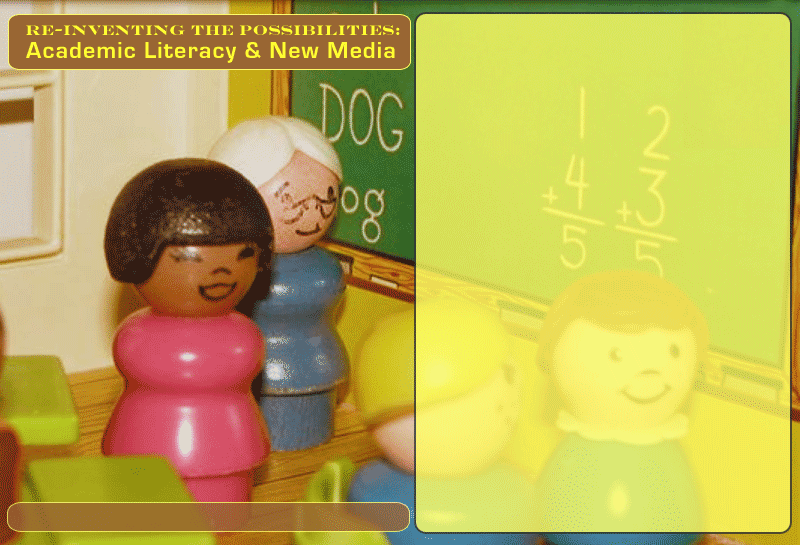
I teach web design and publication production. I also teach classes about digital texts, which can be called literary hypertexts, Flash-based poems, or net art. Generally, it could be said that I teach people how to understand and compose texts. Specifically, I teach students how to compose digital texts. And yes, I teach in an English department. When I tell non-academics what I teach, they take this information with a smile and nod and usually find some reason to walk away. Once in a while they'll ask a question, but not as often as when I have this conversation with academics. Always, without fail, when speaking to academics, I hear the repetition of what I've just said to them in the form of a question: 'You teach web design? In an English department?' And then comes the inevitable, 'Why?'
That's when I really get to explain what I do. I teach (and research) how to make meaning from things no one ever associates with English departments--images, animations, videos, soundtracks, color, typeface, voiceovers, you name it. When talking to people outside of my field, I call these non-alphabetic things modes of communication (and for those in my field, the citation: Cope & Kalantzis, 2000), which can be presented through a slew of media such as hypertext (websites), documentaries, Flash texts, and so on. Drawing on terminology from fields as varied as art, graphic design, film, poetics, linguistics, education, and communication, my particular field—computers-and-composition studies or, more specifically, new media studies—calls the texts that are produced using these multiple modes and media, simply, multimodal or new media texts. Keep in mind that most scholars in computers and composition don't distinguish between those two terms (as Guildenstern, exasperated at Rosencrantz, asks, 'Don't you discriminate at all?') Of course, this audience will recognize and understand those terms, even if the terms are still up for debate. Here, I would insert the requisite literature review and list of citations in order to show that I know that debate. May I just skip that for now? You'll see why I want to skip this part in a moment. Let's just say that, speaking as one person within my field, new media texts are designed using a range of materials and media to create something that doesn't rest on the laurels of written text to convey meaning.
Yet, these definitions don't describe why I teach and research new media texts. The short of it is because there is a need. Students, and people in general, encounter nonwritten forms of communication all the time, every day. One hour of television presents, on average, 12 minutes of commercials. One hour on the Internet presents an entire 60 minutes of visual, aural, interactive texts. Of course, some of these texts have written communication embedded in them, but in many cases, it's not the most significant means of persuading the audience. Perhaps, written text is the most recognizable (and, thus, transparent) means of persuading the audience simply because audiences haven't yet figured out how to pay attention to design as a set of persuasive modalities. However, audiences are being persuaded by design. Therefore, in order for a university to produce students able to critically engage in civic responsibilities, those students need to be able to make meaning from the new media texts with which they are engaged daily.
Go back to the last node.